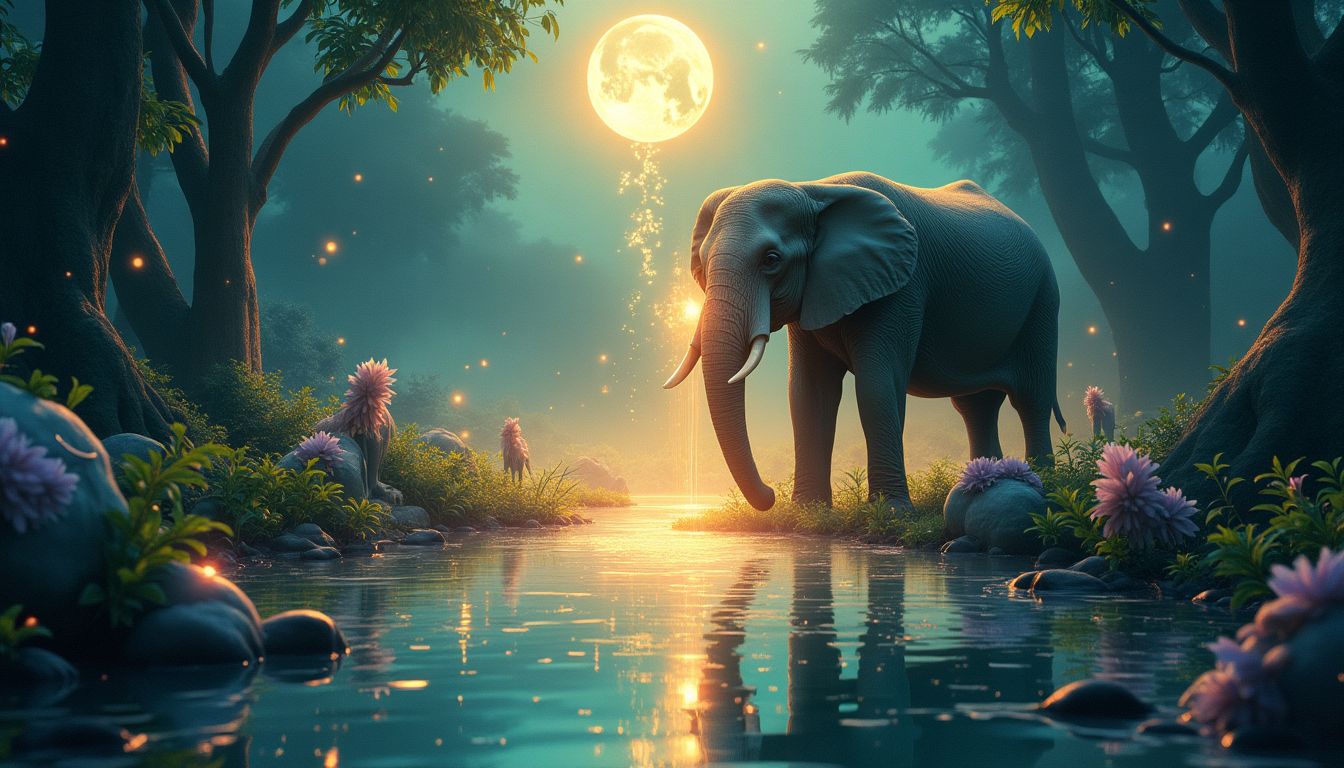Welcome, curious minds, to a fascinating journey into the lesser-known rhythms of nature, a stage where every mammal puts on a performance so synchronized it's worthy of Broadway. Today, we delve into a universal truth—one so consistently astonishing that it might just make you rethink your place in the great chain of being. And it all revolves around a tick-tock, a countdown, a precise 21-second phenomenon that I assure you is not a myth, but one of the quirks of the natural world.
The Great Mystery: The Law of Urination
So, what exactly is this wonder, you ask? Why, it's the "Law of Urination," of course! Every mammal, from the humble house cat to the majestic elephant, shares a curious secret: the time it takes them to empty their bladders. In what might sound like a bad prequel to the movie "Waterworld," researchers have uncovered that nearly every mammal takes the same amount of time—approximately 21 seconds—to complete the act. Credit for bringing this delightfully amusing frontier of science into the limelight goes to the geniuses behind Be Smart's YouTube Channel.
The Mechanics of Mammalian Micturition
But wait, you might say, size must surely matter! A mouse should surely pee faster than an elephant, right? Yet, in the quirky opera of life, size becomes a hero serving the plot in a totally unexpected way. It turns out, when different-sized mammals were timed for this basic yet fundamental activity, the results were nothing short of astonishingly consistent. This golden rule of the animal kingdom is a testament to nature’s harmony and a whimsical twist on the role of size. How exactly, you wonder? The secret lies in the marvellous mechanics of urethras.
Urethras: The Highways of Hydration
Factor in the urethra, and things get really interesting. Larger animals benefit from having wider and longer urethras. As any aspiring physics student will tell you, size does indeed impact flow rate, adjusting under nature’s grand auditor—the gravitational force. Larger and longer urethras mean more gravitational pull, meaning urine flows more swiftly, accounting for the curious equalization in peeing times across mammals.
This is where Blaise Pascal, a historical figure who fancied the power of pressure, trots triumphantly into the narrative. In the same manner that even a narrow column of water can create monumental pressure when held aloft, the urethras of these pee-timing maestros wield their own distinctive power. The lesson here seems to be: never underestimate a urethra, and always appreciate their unique contributions to bathroom efficiency!
The Pressure Puzzle and Nature’s Exceptions
If you’ve ever taken a plunge into the deep end of a swimming pool, the sensation of mounting pressure due to depth might ring a bell. You see, the deeper you dive, the greater the water pressure. This is the same pressure principle Pascal elucidated way back in time and is a key player in the realm of urination dynamics. However, our universal law faces a break in its legalese when dealing with the tiny titans of the mammalian world.
Breaking Down the Law: The Tiny Heroes of the Microsecond
Now, let’s veer off-course and address how this law doesn’t hold water all the time. For the smallest mammals, particularly those under a kilogram, the drama unfolds differently. Here, forces such as viscosity and surface tension step into the limelight, traversing urethras so tight, you'd imagine they're driving down the world’s smallest highway. These creatures don’t even get to ponder over their peeing duration—it’s all done in a blink, in micro-droplets, faster than the flick of a hummingbird's wing.
The Cultural and Social Relevance
Why do these watery workings matter, you ask? Beyond the immediate humor and intrigue lies a profound reminder of life's interconnectedness, a glimpse into the incredible complexities woven into everyday biological functions. More than just water under the bridge, it’s a reminder that size, strength, or species matters little when nature decides to even things out.
It is said that knowledge is power, and in understanding such a consistent yet curious biological law, we're invited to wonder about what other secret rhythms might lurch beneath the veneer of the seemingly mundane. Whether we dwell within sparkling cities or roam sprawling savannahs, in the end, we're all participants in the grand orchestra of life.
Join the Conversation: Rethink, Respond, and Engage
So, my dear reader, I now pass the baton to you. What other universal mysteries lurk under the surface that we've yet to uncover? How do you think our understanding of the world changes when we uncover patterns in the natural world that defy our expectations? Share your thoughts, your musings, and your speculations below! Dive into this fascinating spiral that accounts for our place beneath the stars. I invite you to not only join in the conversation but also to embark on the dynamic journey of becoming a citizen in our Shining City on the Web! Engage, like, share, and subscribe to become a part of our vibrant iNthacity community, where knowledge flows richer than golden ambrosia.
Wait! There's more...check out our gripping short story that continues the journey: A Song of Shadows
Disclaimer: This article may contain affiliate links. If you click on these links and make a purchase, we may receive a commission at no additional cost to you. Our recommendations and reviews are always independent and objective, aiming to provide you with the best information and resources.
Get Exclusive Stories, Photos, Art & Offers - Subscribe Today!

























Post Comment
You must be logged in to post a comment.